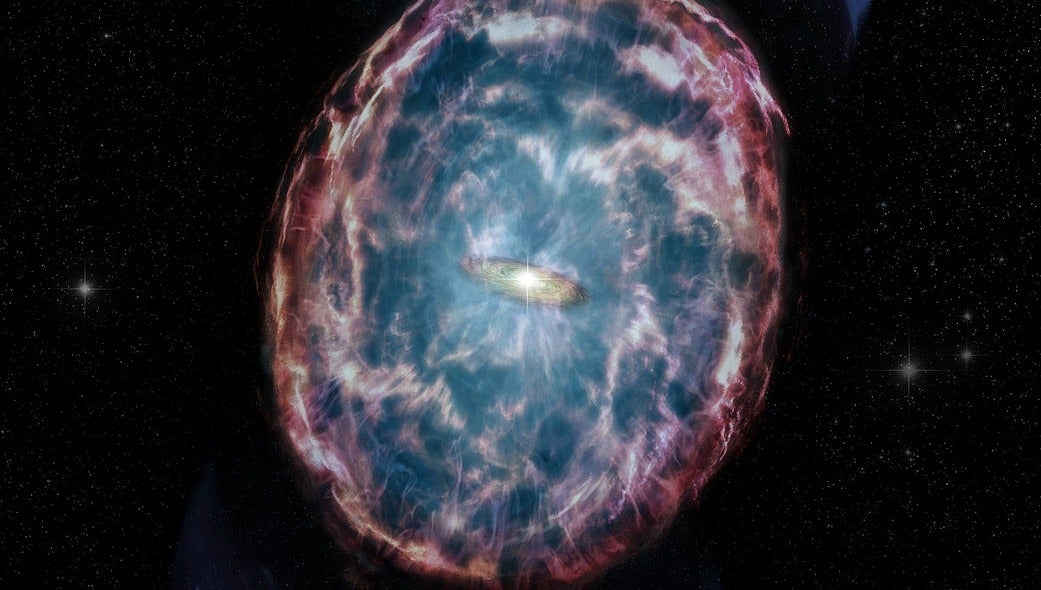Scientists detect either first ‘kilonova’ afterglow, or new black hole’s first meal
Astronomers first detected the original blast from the merger in 2017

Your support helps us to tell the story
From reproductive rights to climate change to Big Tech, The Independent is on the ground when the story is developing. Whether it's investigating the financials of Elon Musk's pro-Trump PAC or producing our latest documentary, 'The A Word', which shines a light on the American women fighting for reproductive rights, we know how important it is to parse out the facts from the messaging.
At such a critical moment in US history, we need reporters on the ground. Your donation allows us to keep sending journalists to speak to both sides of the story.
The Independent is trusted by Americans across the entire political spectrum. And unlike many other quality news outlets, we choose not to lock Americans out of our reporting and analysis with paywalls. We believe quality journalism should be available to everyone, paid for by those who can afford it.
Your support makes all the difference.Scientists have detected for the first time the afterglow of a kilonova, the violent merger of two neutron stars or black holes.
Astronomers first detected the original blast from the merger in 2017, when the advanced Laser Interferometer Gravitational-wave Observatory, or LIGO, picked up gravitational waves characteristic of a merger between neutron stars or black holes.
A burst of gamma radiation, visible and infrared light were also observed within hours of the detection of the gravitational waves.
In a new paper published in The Astrophysical Journal Letters, researchers from multiple US universities describe how continued monitoring of the merged stars — now known collectively as GW170817 — using Nasa’s Chandra X-ray Observatory may have led to either the first observation of kilonova afterglow or an equally unique observation of a new black hole’s first meals.
"We have entered uncharted territory here in studying the aftermath of a neutron star merger," Aprajita Hajela, a graduate student in astrophysics at Northwestern University and lead author of the study, said in a statement.
Not as bright as a supernova, astronomers have observed the flash of light from kilonovae before, and believe it results from the decay of radioactive elements generated in the merger. But the detection of a kilonova’s afterglow is new.
The Chandra observatory first picked up an X-ray emission from GW170817 in early 2018 and found that the signal became fainter over time until around the end of 2020 when the X-rays settled into a constant brightness.
That pattern of decreased X-ray emission before settling into constant brightness is what researchers believe signifies the afterglow of the kilonova, X-rays produced by a shock wave heating debris from the merger.
The researchers note there could be an alternative explanation: the X-ray emissions could be the results of material falling into a newly formed black hole.
Neutron star mergers do frequently result in the formation of a black hole, but the researchers believe the observed emissions indicate its unlikely in the case of GW170817 — a black hole formed by the merger would have limited the scale of the kilonova.
Further observations of GW170817 could be decisive. A kilonova afterglow should lead to increasingly bright radio emissions from the object, while a black hole should produce steady or declining X-ray emissions with no radio emissions.
Either outcome will be interesting to scientists.
"This would either be the first time we’ve seen a kilonova afterglow or the first time we’ve seen material falling onto a black hole after a neutron star merger," study co-author and University of California, Berkeley post-doctoral researcher in astronomy Dr Joe Bright said in a statement. “Either outcome would be extremely exciting.”
Join our commenting forum
Join thought-provoking conversations, follow other Independent readers and see their replies
Comments